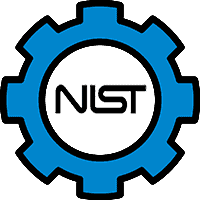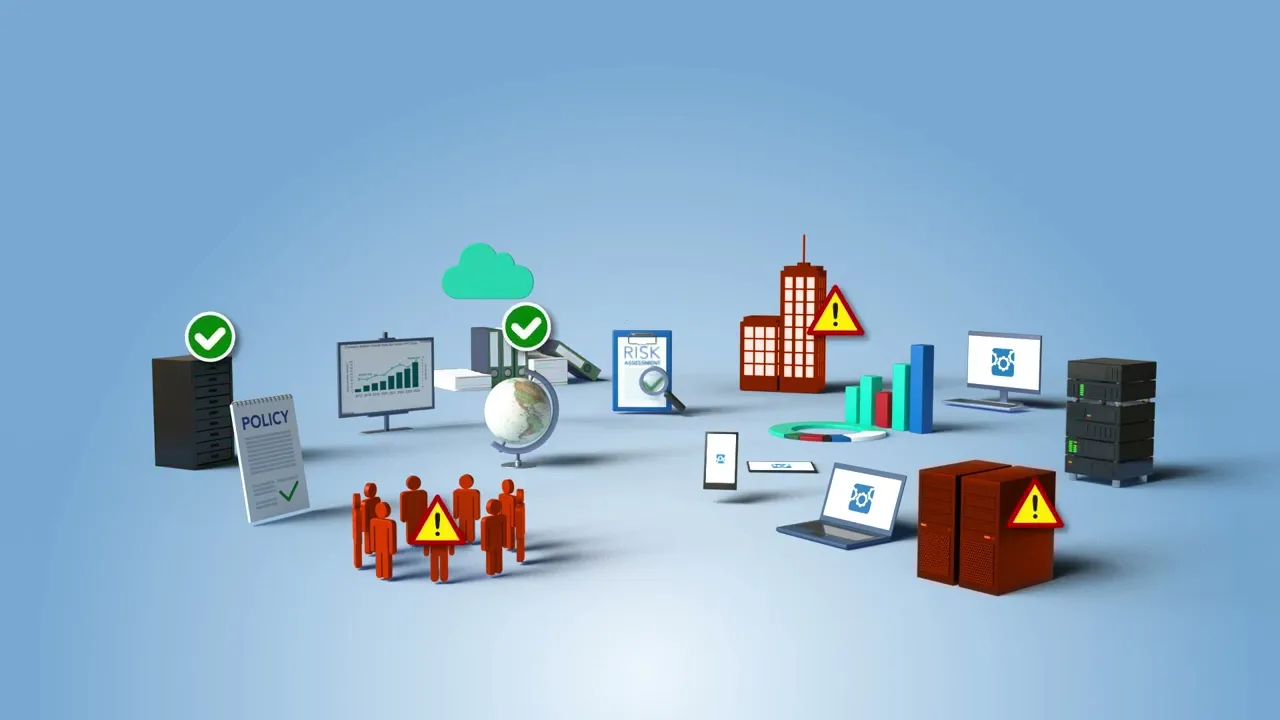Your Roadmap to Risk Reduction!
Table of Contents
ToggleThe Continuum GRC ITAM SaaS platform has hundreds of plugin modules available, such as:

NIST Special Publication 800-218
This software development life cycle (SDLC) model explicitly addresses software security in detail, so secure software development practices usually need to be added to each SDLC model to ensure that the software being developed is well-secured. This document recommends the Secure Software Development Framework (SSDF) – a core set of high-level secure software development practices that can be integrated into each SDLC implementation. Following these practices should help software producers reduce the number of vulnerabilities in released software, mitigate the potential impact of the exploitation of undetected or unaddressed vulnerabilities, and address the root causes of vulnerabilities to prevent future recurrences. Because the framework provides a common vocabulary for secure software development, software purchasers and consumers can also use it to foster communications with suppliers in acquisition processes and other management activities.
Modules include:
- NIST Special Publication 800-218 Secure Software Development Framework Preamble
- NIST Special Publication 800-218 Secure Software Development Framework
NIST 800-218 Designed to Achieve
NIST 800-218 is also known as the Secure Software Development Framework (SSDF).
This framework is used by software developers to create a secure product around guidelines established by the National Institute of Standards and Technology. The focus is on incorporating robust security practices at every stage of the development life cycle: planning, deployment, and maintenance.
SSDF provides a common set of standards that can be used to reduce security vulnerabilities in software and address the causes of any future gaps. These are applied throughout the development process, including coding, integration testing, reviews, and more.
Benefits of NIST 800-218 compliance
The standards of NIST 800-218 greatly reduced security vulnerabilities and show a commitment to better risk management when creating quality software. This is a benchmark that applies gold-standard security practices to every step of software development, from the production environment, the acceptance testing phase, automated deployment, and the post-implementation process.
Working within NIST 800-218 compliance requirements makes it simpler to achieve the stringent security demands of government agencies and to work with highly-regulated industries. This alone provides a competitive advantage. Following these security standards also creates greater trust among users
FAQ
How does NIST 800-218 relate to the SDLC?
SDLC stands for “Software Development Life Cycle". NIST 800-218 refers to the Secure Software Development Framework and provides a structured path for embedding security protocols at every step of the SDLC. The security standards of NIST 800-218 are included from the very beginning of SDLC, rather than put in as an afterthought.
What will NIST SSDF compliance look like for software vendors?
It begins with management controls that establish clear procedures for secure development, including any training for secure coding. There should be measures created to protect all software components, source code, and to limit access within this controlled environment. Processes for identifying (and remediating) vulnerabilities need to be documented, as well as incident reports.
Who will need to comply first with NIST 800-218?
Any companies that develop and sell software to any part of the U.S. government, whether it’s federal, state, or local, need to be compliant with NIST 800-218. If you’re not currently in compliance, achieving these security standards can offer new opportunities.
What is the difference between ISO 27001 and NIST SP 800?
ISO 27001 is a voluntary international standard for managing information security. It’s a bit more flexible, allowing organizations to adapt to their specific situations. NIST SP 800 compliance is mandatory for all security and privacy controls involving U.S. government information.
What are the phases of the SDLC covered in NIST 800-218?
There aren’t any defined phases in the SDLC regarding NIST 800-218; instead, the process emphasizes a “secure-by-design” approach, implementing security measures from the design stage to implementation, testing, and maintenance. This is a proactive approach that treats security as part of the entire lifecycle, versus as an afterthought.
What are the security controls included in NIST 800-218?
They start by preparing the organization with the policies and procedures for a secure development process. The software must be protected at every stage, and the goal is to produce well-secured software. Finally, a key control is responding to vulnerabilities. Various controls should be implemented against any kind of malicious intervention.
What are you waiting for?
You are just a conversation away from putting the power of Continuum GRC to work for you.
Contact us using the form below or calling us at 1-888-896-6207 for immediate assistance.
If you have received this message in error, please contact us using the telephone number listed on our website for assistance.
About the Standard
NIST Special Publication (SP) 800-218, known as the Secure Software Development Framework (SSDF) Version 1.1, provides a set of high-level best practices to integrate security into the Software Development Life Cycle (SDLC) to reduce vulnerabilities and mitigate risks in software. It was published in February 2022, following Executive Order 14028, to address software supply chain security, particularly for federal agencies and their contractors, but its practices are broadly applicable. Below is a compliance overview of NIST SP 800-218, structured around its four core practice areas, key requirements, and steps for implementation, with insights into its importance and challenges.
Core Practice Areas and Key Requirements
NIST SP 800-218 organizes its recommendations into four practice areas, each with specific tasks to ensure secure software development. These are not strict compliance mandates but guidelines to be adapted to an organization’s SDLC.
- Prepare the Organization (PO)
This area focuses on establishing organizational readiness for secure software development.- Key Tasks:
- PO.1: Define and document security requirements for software development processes and organization-developed software, ensuring alignment with regulations and risk levels.
- PO.2: Assign roles and responsibilities for secure development, including role-based training (e.g., using tools like Checkmarx CodeBashing).
- PO.3: Implement secure toolchains, specifying tools like Static Application Security Testing (SAST) and ensuring their secure configuration.
- PO.4: Define criteria for security checks and track them throughout the SDLC.
- PO.5: Maintain secure development environments with access controls, multi-factor authentication (MFA), and zero-trust principles.
- Compliance Insight: Organizations must formalize security policies, train staff, and secure development infrastructure. A notable challenge is requiring third-party vendors to provide provenance data (PO.1.3), as such mechanisms are not yet widespread.
- Key Tasks:
- Protect the Software (PS)
This focuses on safeguarding software components from tampering and unauthorized access.- Key Tasks:
- PS.1: Store all code (source, executable, configuration-as-code) with least-privilege access controls and encryption to prevent unauthorized modifications.
- PS.2: Provide mechanisms for verifying software release integrity, such as cryptographic signatures or hashes, often included in Software Bill of Materials (SBOMs).
- PS.3: Archive software releases securely, maintaining provenance data and ensuring immutability of release artifacts.
- Compliance Insight: Emphasis on cryptographic signing (e.g., using tools like Sigstore) and SBOM generation (supported by platforms like Sonatype) is critical. A challenge is implementing robust commit and artifact signing, as current public key infrastructure (PKI) systems can be complex or costly.
- Key Tasks:
- Produce Well-Secured Software (PW)
This area emphasizes designing and building software with minimal vulnerabilities.- Key Tasks:
- PW.1: Use risk modeling (e.g., threat modeling) to design software that meets security requirements.
- PW.2: Conduct design reviews by independent parties or automated tools to verify compliance with security requirements.
- PW.4: Reuse well-secured, existing components (e.g., libraries, frameworks) instead of custom implementations.
- PW.7: Employ automated tools like SAST to detect vulnerabilities early in development.
- PW.8: Continuously test software for security weaknesses using tools like SAST and Dynamic Application Security Testing (DAST).
- Compliance Insight: Automated tools (e.g., Qwiet, Checkmarx) are essential for early vulnerability detection, and secure-by-default design (PW.9) is a priority. A challenge is maintaining accurate asset inventories, especially for tracking compiler versions and their vulnerabilities.
- Key Tasks:
- Respond to Vulnerabilities (RV)
This focuses on post-release vulnerability management and response.- Key Tasks:
- RV.1: Establish processes to identify and remediate vulnerabilities after release, including proactive monitoring of vulnerability databases.
- RV.3: Maintain a vulnerability disclosure program to handle reported issues transparently and efficiently.
- Compliance Insight: Continuous monitoring and a formal disclosure program are critical. Establishing a robust response program is resource-intensive and challenging, especially for smaller organizations.
- Key Tasks:
Importance of NIST SP 800-218 Compliance
- Security Enhancement: Integrating security into every SDLC phase reduces vulnerabilities, mitigates exploitation risks, and addresses root causes to prevent recurrence.
- Regulatory and Contractual Requirements: Compliance is often mandatory for federal agencies and contractors under Executive Order 14028, with vendors required to attest to SSDF adherence via CISA’s Secure Software Development Attestation Form. It’s also valuable for regulated industries like finance, healthcare, and critical infrastructure (e.g., energy, transportation) to meet standards like HIPAA or GDPR.
- Competitive Advantage: Demonstrating compliance builds trust with clients and partners, especially in high-security sectors, enhancing marketability.
- Risk Reduction: Proactive security practices lower the likelihood of breaches, protecting sensitive data and critical systems.
Steps to Achieve Compliance
- Gap Analysis: Assess current practices against NIST SP 800-218 to identify deficiencies in security requirements, tools, or processes.
- Tool Integration: Adopt tools like SAST (e.g., Checkmarx, Qwiet) and DAST for vulnerability detection, and platforms like Sonatype for SBOM generation and component management.
- Continuous Monitoring: Implement automated monitoring to detect new vulnerabilities and ensure ongoing compliance with security policies.
- Documentation and Reporting: Maintain detailed records of security requirements, tool usage, and decisions to support audits and transparency.
- Training and Roles: Provide role-based training and clearly define responsibilities to ensure all team members understand secure development practices.
- Third-Party Management: Set security standards for third-party software and verify compliance through provenance data and SBOMs.
Challenges in Compliance
- Subjectivity in Implementation: NIST SP 800-218 provides principles, not measurable requirements, making it hard to verify compliance. The U.S. government is still clarifying how vendors’ attestations will be validated.
- Resource Intensity: Establishing processes like vulnerability disclosure programs or maintaining secure environments requires significant resources, which can strain smaller organizations.
- Third-Party Compliance: Requiring provenance data from third-party vendors is challenging due to limited adoption of such practices.
- Toolchain Complexity: Integrating and securing toolchains, especially for signing and verification, can be technically complex and costly.
Who It Applies To
- Federal Agencies and Contractors: Mandatory for U.S. government agencies and vendors supplying software, per Executive Order 14028.
- Regulated Industries: Finance, healthcare, and critical infrastructure sectors benefit from aligning with SSDF to meet regulatory requirements.
- Software Vendors and In-House Teams: Any organization developing or managing software, including startups, enterprises, and managed service providers, can use SSDF to enhance security.
- Organizations Using Third-Party Software: Enterprises relying on third-party solutions can use SSDF to set vendor security standards.
Tools and Support for Compliance
- Checkmarx: Supports tasks like training (PO.2.2), security checks (PO.4), and vulnerability detection (PW.7, PW.8) through its scanning engines and CodeBashing platform.
- Sonatype: Aids in SBOM generation (PS.3.2), component security (PW.4), and secure repository management (PS.1).
- Qwiet: Helps with vulnerability detection and mapping to SSDF requirements using SAST and DAST tools.
- Lazarus Alliance: Offers maturity assessments and security architecture reviews to align with SSDF.
Critical Perspective
While NIST SP 800-218 is a robust framework, its non-prescriptive nature can lead to inconsistent implementation. The reliance on vendor self-attestation raises concerns about accountability, as the government has yet to define clear verification methods. Additionally, the framework’s focus on federal compliance may overwhelm smaller organizations with limited resources. Critics argue that without standardized metrics or enforcement, some vendors may claim compliance without sufficient rigor.
Conclusion
NIST SP 800-218 provides a flexible, principle-based framework to embed security into software development, focusing on preparation, protection, production, and vulnerability response. Compliance enhances security, meets regulatory needs, and builds trust, but requires careful planning, tool integration, and ongoing monitoring. Organizations should leverage automated tools, conduct gap analyses, and prioritize training to align with SSDF, while being mindful of challenges like subjective compliance verification and resource demands.
Amazing Benefits

